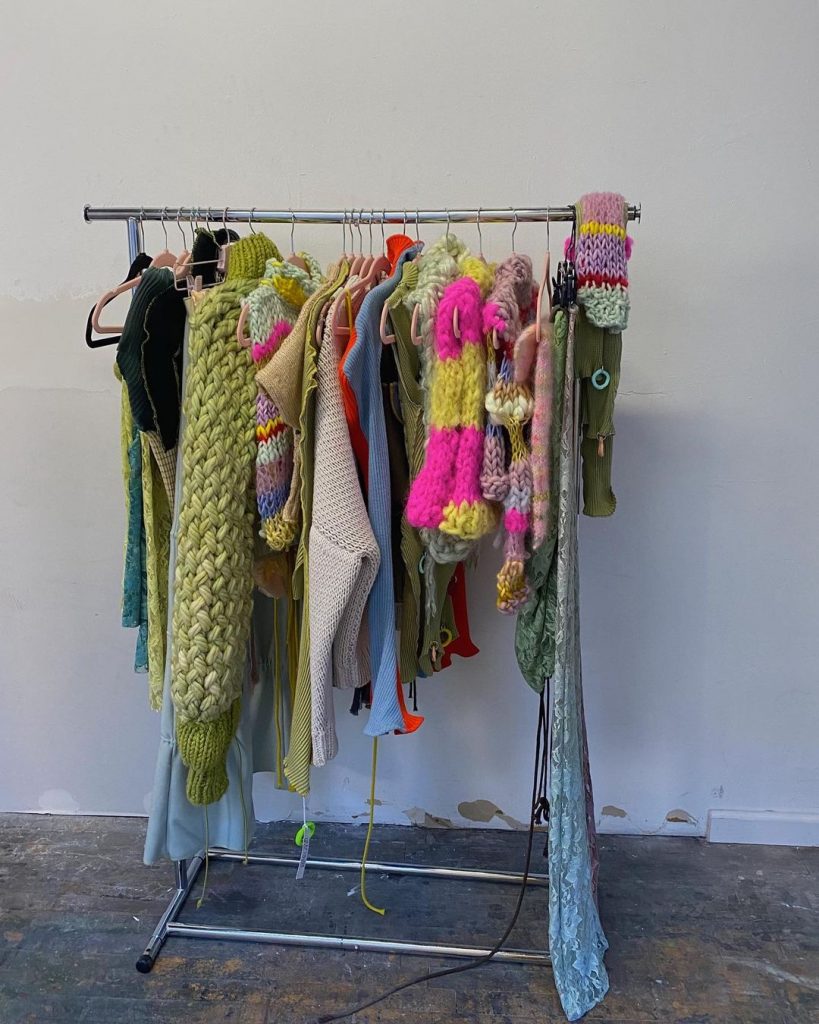- À New Wave to Fashion, À New Way of Living. Download Now on iOS Android Canada SS22
- hello@alahausse.ca
What are Retailers Planning to do with Excessive Inventory Pile Up from COVID-19?

DIY Mending: Fashion Sustainability is in Your Hands
April 23, 2021
Thrifting 101: What To Look For In Secondhand Fashion
April 30, 2021
Written by Danielle Williams
Are retailers focusing on sustainable options to move excessive inventory?

Fashion merchandising can be tough especially with styles losing trend as quickly as they were gained. This results in over ordered clothing that remain unsold or are marked down to margin-killing prices. Retailers have been trying to traverse through these ambiguous times due to COVID-19, but they’re now facing a new problem: excessive amounts of unsold inventory. Moving inventory has become increasingly difficult with month long closures of instore shopping resulting in severe financial, operational and scheduling complications.
Permission to open stores during the holiday season began to bring some hope to retailers, but soon after came months of closures which regressed any progress made with their inventories. Apparel retailers are struggling to move an overload of spring 2020 clothing in order to make room for this year’s collections. Are there sustainable solutions for this issue? Absolutely! Through research we’re finding that retailers are being given opportunities to sell, repurpose, or recycle last season’s collections without sending excessive inventory directly to the landfills.
The Retail Council of Canada
The Retail Council of Canada (RCC) supported by the Canada Revenue Agency (CRA) is working to help retailers move products and have access to other products without the use of cash. They call this Retail Barter Pay. This is basically a nation-wide trading platform to support retailers and help our economy get back on our feet. Retailers will now have the opportunity to move slow-moving or last season’s apparel at regular prices, but instead of exchanging money, they trade goods or services. This trade can be translated into BarterPay Barter Credits, where one credit equals one Canadian dollar and is also recognized by the CRA as cash. These credits can also be used in exchange for any items or services offered by retailers involved in this program. So this means, no added waste, no loss of revenue and retailers are given an opportunity to move their stock!
“Retailers across Canada are entering the most challenging retail environment ever experienced. Many are showing incredible creativity in how they are rethinking their businesses. RetailBarterPay is an excellent complement to retailers’ efforts as it allows them to tap into their existing idle inventory at full margins to re-invest into other areas of their business where they need products and services right now, says Diane J. Brisebois, President and CEO Retail Council of Canada.
As a first response initiative, members of the RCC program will receive a $175 credit, special promotions along with interest-free BarterPay small business loans.

What is BarterPay?
It is Canada’s only B2B social profit system, with headquarters located in Hamilton, Ontario. BarterPay is here to help retailers get what they need without using cash, but rather through trading their shiftless, excessive inventory. This growing retail network had $40 million in successful barter transactions in 2019, and they only plan to continue adding to that. The future plans of BarterPay include having 50,000 businesses, 5000 charities, $500 million in transactions and more than $100 million being donated to charitable organizations per year by 2025. These goals are ambitious, but very achievable.
What are retailers not included in the RCC doing with their excessive inventory?

Businesses not included in the RCC program are somewhat left to their own devices on how to move their inventory in a sustainable way without causing environmental damage. In the future, there are plans to expand this program significantly, but until then here is a list of what retailers are doing to switch out seasonal collections without producing waste.
Donate, donate, donate.
The pandemic has brought on a lot of unpredicted needs and amplified others. The need for clothing has increased significantly because of COVID-19 restrictions and outbreaks in shelters, which resulted in many people being forced to sleep outdoors and embrace the weather. Retailers can identify community needs and donate as they see fit, anything helps! Along with helping the community, donating unsold inventory also helps retailers reach sustainability goals and reduce waste.
Recycle, upcycle or repurpose!
Post-consumer textile recovery initiatives are taking unsold products made of cotton, poly-cotton and polyester and are discovering new ways in which they can be repurposed or sustainably recycled. Repurposing and recycling helps move excess stock, while maintaining sustainability and reducing waste, which then leads to less waste going to landfills or being incinerated. This is the definition of “using less while doing more,” the key to an effective waste hierarchy.
Pack it up for a future "last season" sale!
Instead of wasting perfectly good clothing, retailers are getting organized and sorting unsold merchandise into categories for when the appropriate season comes around again. For example, this season’s winter clothes will be sold at a significant discount next winter. Sounds like a win, win to us! Future inventory savings will cancel out the cost of having to store the unsold garments because they will simply be resold instead of bringing in all new stock.
Sell excessive inventory to off-price retailers.
In North America, off-price retailers are a predetermined destination for excess merchandise. Some recognizable examples of this would be Winners, Nordstrom, or Marshals. What you probably didn’t know is that these large department stores help reduce a ton of waste by purchasing last season’s clothing or stock that retailers deem unsellable. It’s possible that in the future more and more retailers will turn to off-price companies to handle their excessive inventory left over from COVID-19. There is a downside to this route. The majority of these off-price retailers don’t have any e-commerce capabilities, so in the event that another lockdown occurs, they will be stuck with the same issue other retailers face.

What happens now?

A recent study from McKinsey & Company predicted that there is around $160 – $185 billion globally of excess merchandise from spring 2020 apparel collections. That’s more than double from previous levels. This much excessive inventory can result in multiple production disturbances, such as delays in shipping, unforeseen technical issues, returns and more. Trends in the market obviously come into play when dealing with this issue as well. Retailers don’t want to be selling discounted winter clothing in April, but with planning and creativity this merchandise doesn’t have to go to waste.
The future of the fashion retail industry is still difficult to predict with continued waves of the pandemic. However, right now is crucial for everyone in all corners of the industry to have a plan in place and prepare for the unexpected. To stop adding to the piles of unused inventory, we at ÀLA HAUSSE want to work with brands in reducing their excessive inventory by providing a platform where brands can sell their overstock inventory and samples. So let’s not let last season’s puffer coat get in the way of a sustainable future in fashion!
Via ÀLA.HAUSSE‘s Multi-functional and Multi-purposeful Fashion Ecosystem- BUY/SELL/RENT/LEND/ (swap BETA 2021) mobile application, INDIVIDUALS & brands ( BETA 2021) are encouraged to REBUY, RESELL, REUSE and UP-CYCLE their personal “Clossets” aka Clothing Assets, along with overstock inventory and samples. Through this consumerism habit shift we indirectly slow down the urgency on fashion’s carbon footprint, aiding sustainability as a whole.
BETA Early Access Application Now Open for CA Fashion Lovers: Apply Now for LAST CALL
with Stories on www.alahausse.ca
#ALAHAUSSE #WEARYOURPURPOSE #HAUSSEPEOPLE
References:
- https://www.retaildive.com/news/covid-19-wreaks-havoc-on-inventories/575795/
- https://www.womeninretail.com/ways-to-deal-with-excess-inventory-during-covid-19/
- https://www.retailcouncil.org/press-releases/retailers-can-now-trade-excess-inventory-for-needed-goods-and-services-and-conserve-cash/
- https://blog.euromonitor.com/how-brands-and-retailers-can-deal-with-excess-inventory-due-to-coronavirus-closures/
- https://retailminded.com/ways-to-manage-excess-inventory-in-this-new-age-of-retail/#.YEkasWhKg2w








